Coughs, colds and old-fashioned curatives
- Published

At this time of year, the over-the-counter cough and cold pharmaceuticals industry is booming. And it's an area of medicine where traditional remedies reign supreme. Barnips Lozenges, Coltsfoot Rock, and Teddy Gray's Herbal Tablets are among the old-fashioned restoratives still occupying a place in our medicine cabinets.
So what's the story of the heavily guarded recipes concocted by family businesses across England?

Teddy Gray's Herbal Tablets

Established in 1826, the Dudley company remains a family-run business - now in its fifth generation - and has four shops across the West Midlands.
The original herbal tablet "is ideal for cold nights and mornings" and presumably cold afternoons too. It is made according to a secret family recipe.
John Gray set up the company as he thought buying and selling sweets would be a good way of making money, and he traversed the area in his horse and cart, eventually deciding to make his own sweets. His son Teddy took the business from strength to strength.
There was a hiccup caused by the sugar shortage in World War Two, but once rationing was over, Mr Gray junior was able to focus more on wholesale, thus making the herbal tablet the wild success it is today.
By the way, Teddy was not just obsessed with his confectionery - he was a keen dog breeder, specialising in wire haired fox terriers (the dog featured on the packet), and was a winner at Crufts.
His daughter Betty began working at the business in 1962. Her brother, son and grandson all work there too.


Fisherman's Friend
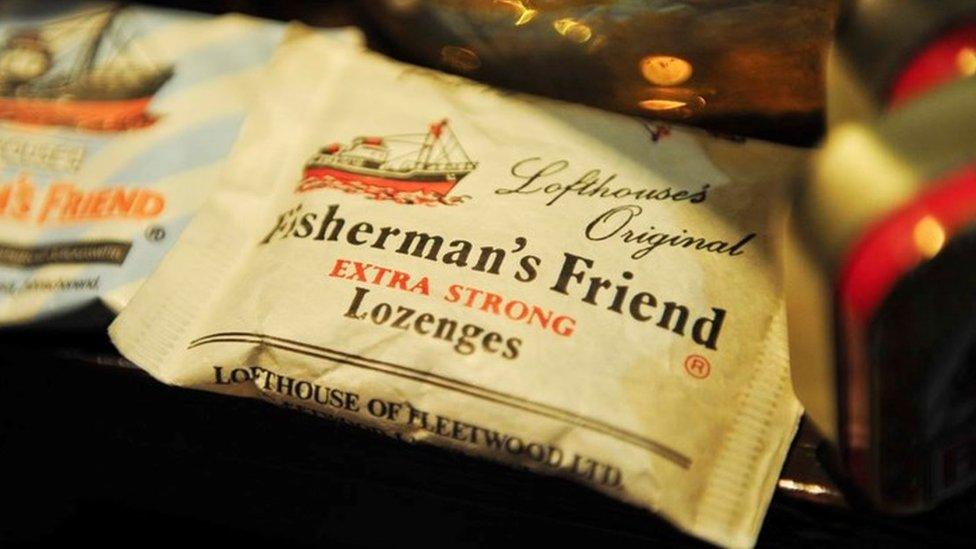
The black and red branding on Fisherman's Friend is down to the original adverts being produced on typewriters with black and red ribbons
Not now limited to trawlermen and anglers, Fisherman's Friend was developed in 1865 by Fleetwood pharmacist James Lofthouse for local fishermen to take with them on stormy and freezing trips into the North Atlantic.
Early labels proclaimed the product was suitable for "internal and external use", but before you embark on rubbing lozenges on your chest, this was when Fisherman's Friend was a liquid.
However, choppy high seas don't make for an easy bedfellow with fluid in glass bottles, so the resourceful pharmacist turned his mixture into a lozenge.
Holidaymakers to Fleetwood were quick to snap up the menthol and eucalyptus treat, and spotting the financial potential of the fiery pellet the Fleetwood family started selling to shops in surrounding towns.
By 1974, fishermen had friends in Belgium and Norway.
The lozenge also took on new shape, based on the design of the buttons on one of the dresses Doreen Lofthouse wore to the office.
Ingredients
Original Extra Strong lozenges contain:
Sugar
Liquorice extract
Menthol
Eucalyptus oil
Dextrin
Tragacanth (a natural gum extracted from dried sap)
Capsicum tincture
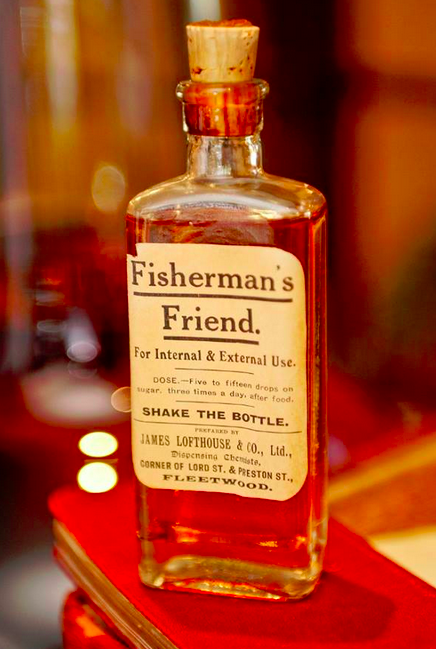
The company is still family-owned and churns out more than five billion lozenges a year. Some flavours - such as salty liquorice - are only available in certain countries, but there is a mail order service allowing UK residents to get their mitts - and sinuses - on some of the more exotic varieties.
The hot little pills even have official super-fans, external, including Stephen from Birmingham. He first tried Fisherman's Friend when he was 11, and is so keen on them he refuses to carry them around with him in case he's asked to share.
He says he once even took a fairly long trip on public transport to get hold of Aniseed Fisherman's Friend at a large shopping centre when his local shops happened to be out of stock.
Chocolatier Adam Chandler picked up a gold medal trophy for his creation at the 2013 International Chocolate Awards. He created a Fisherman's Friend Truffle, filling a dark chocolate shell with a ganache made from Original Extra Strong lozenges melted into whole cream and a dark chocolate base.
Which doesn't sound at all revolting.

Fisherman's Friend lozenges are sold across the globe

Barnips and Lun Jeelers

Barnett's Winter Nips - eventually truncated to Barnips - have been produced in Nottingham since 1896 and are still made in traditional copper pans.
The nips - menthol lozenges - were particularly popular with workers in heavy industries like the iron foundries and mining, where heat and dust brought on a dry throat.
Lun Jeelers - originally called lung healers - are also made by the company, which is still family-run.
The firm exports to various countries, including Iceland, where the menthol and eucalyptus treats are extremely popular.

The Barnett boys - Mike, Rob, Alan and Richard - in the 1980s
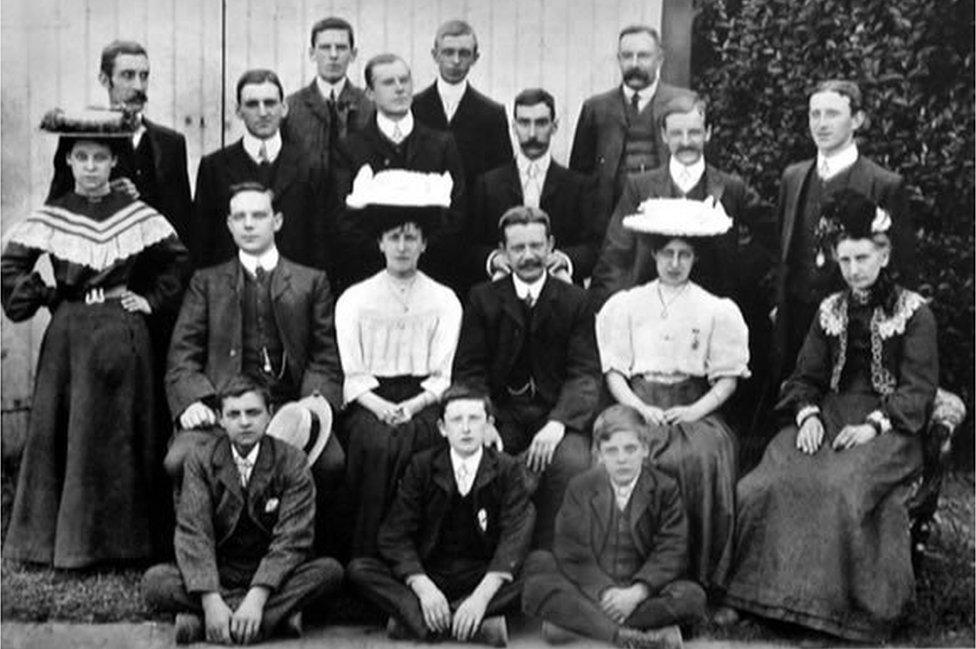
Smile! The Barnips staff on an outing in the early 1900s, looking particularly dour at the prospect of a day away from the cough drops

Coltsfoot Rock
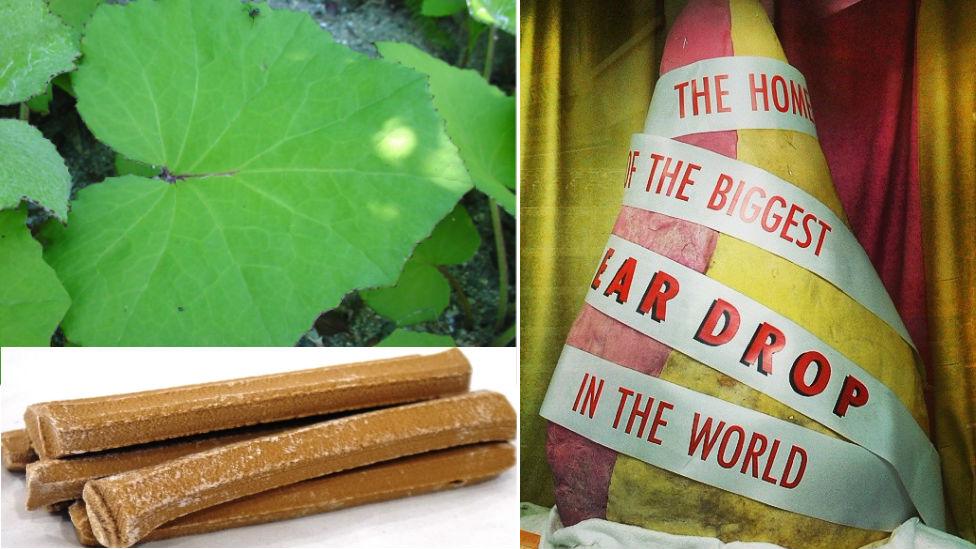
Stockley's is not only the sole manufacturer of Coltsfoot Rock, but owns the world's largest pear drop
Coltsfoot Rock has been made by Stockleys Sweets in Lancashire for the past 90 years. It's a paste dried hardened stick infused with Coltsfoot extract, external, an ingredient from a plant - botanical name Tussilago farfara - that has hoof-shaped leaves.
Originally the leaves of the plant were dried, then smoked. This was thought to have relieved asthma, while its juices soothed coughs. One of its other common names is Coughwort and in Paris, the flowers used to be painted as a sign on the doorpost of an apothecary's shop.
Stockley's was set up after World War One by Malcolm Stockley who'd been a keen toffee-maker in his youth.
His goods were popular across England, and even spread across the Atlantic when they were exhibited at the World Exhibition in San Francisco in 1939.
For those seeking a sugary thrill, a visit to Stockley's Sweet Shop at Oswaldtwistle Mills will be rewarded with a glimpse of the world's largest pear drop, which is on display there.

Proctor's Pinelyptus Pastilles
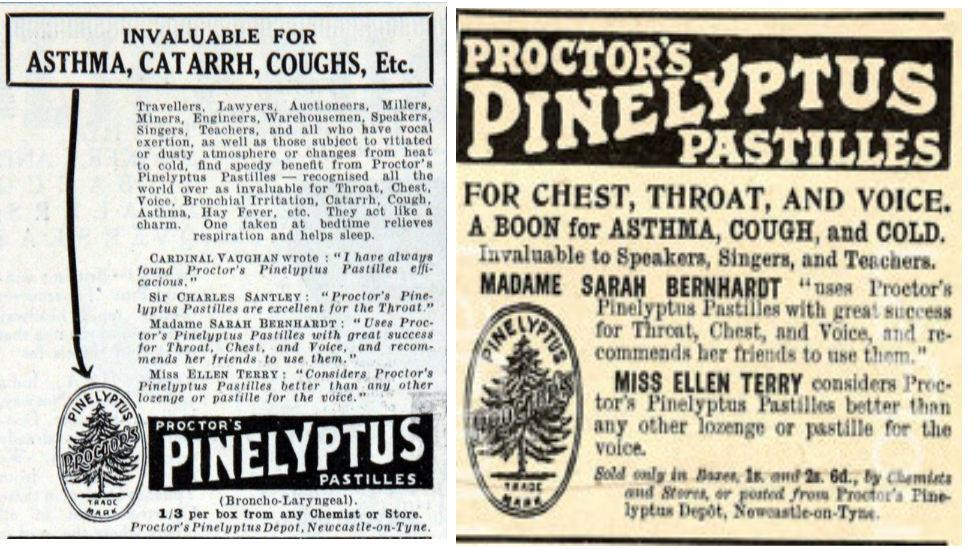
These alliterative medicinal sweets date back to about 1890 and were championed by famous personages including Shakespearean actress Ellen Terry and opera star Charles Santley.
Now made by pharmaceutical company Ernest Jackson at its factory in Crediton, Devon, the confectionary contains eucalyptus oil and menthol.
A 1908 advert claims the pastilles "are unequalled for clearing the throat and giving tone and strength to the voice".
"They are of immense service to Speakers, Singers, Teachers, Travellers, and all who have much talking to do."
And with those celebrity endorsements, they'd appeal to most medicated followers of fashion.